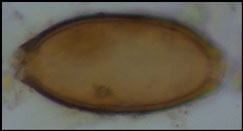Crossref Citations
This article has been cited by the following publications. This list is generated based on data provided by
Crossref.
Wells, Jonathan C. K.
and
Stock, Jay T.
2020.
Life History Transitions at the Origins of Agriculture: A Model for Understanding How Niche Construction Impacts Human Growth, Demography and Health.
Frontiers in Endocrinology,
Vol. 11,
Issue. ,
Shillito, Lisa-Marie
Blong, John C.
Green, Eleanor J.
and
van Asperen, Eline N.
2020.
The what, how and why of archaeological coprolite analysis.
Earth-Science Reviews,
Vol. 207,
Issue. ,
p.
103196.
Pawłowska, Kamilla
2020.
Towards the End of the Çatalhöyük East Settlement.
Near Eastern Archaeology,
Vol. 83,
Issue. 3,
p.
146.
Else, Kathryn J.
Keiser, Jennifer
Holland, Celia V.
Grencis, Richard K.
Sattelle, David B.
Fujiwara, Ricardo T.
Bueno, Lilian L.
Asaolu, Samuel O.
Sowemimo, Oluyomi A.
and
Cooper, Philip J.
2020.
Whipworm and roundworm infections.
Nature Reviews Disease Primers,
Vol. 6,
Issue. 1,
Portillo, Marta
García-Suárez, Aroa
and
Matthews, Wendy
2020.
Livestock faecal indicators for animal management, penning, foddering and dung use in early agricultural built environments in the Konya Plain, Central Anatolia.
Archaeological and Anthropological Sciences,
Vol. 12,
Issue. 2,
Portillo, Marta
and
García-Suárez, Aroa
2021.
Disentangling Human–Plant–Animal Dynamics at the Microscale: Geo-Ethnoarchaeological Case Studies from North Africa and the Near East.
Applied Sciences,
Vol. 11,
Issue. 17,
p.
8143.
Pritchard, David I.
Falcone, Franco H.
and
Mitchell, Piers D.
2021.
The evolution of IgE‐mediated type I hypersensitivity and its immunological value.
Allergy,
Vol. 76,
Issue. 4,
p.
1024.
Gaeta, Raffaele
and
Fornaciari, Gino
2022.
Helminth Infections and their Impact on Global Public Health.
p.
73.
Mitchell, Piers D.
Anastasiou, Evilena
Whelton, Helen L.
Bull, Ian D.
Parker Pearson, Mike
and
Shillito, Lisa-Marie
2022.
Intestinal parasites in the Neolithic population who built Stonehenge (Durrington Walls, 2500 BCE).
Parasitology,
Vol. 149,
Issue. 8,
p.
1027.
León-Cristóbal, Alejandro
2022.
Las enfermedades infecciosas en la Prehistoria: diversos casos de estudio.
Memoria y Civilización,
Vol. 25,
Issue. ,
p.
245.
Mowlavi, Gholamreza
and
Bruschi, Fabrizio
2022.
Encyclopedia of Infection and Immunity.
p.
644.
Else, Kathryn J.
and
Gibbs, Julie E.
2022.
Parasites—The importance of time.
Parasite Immunology,
Vol. 44,
Issue. 3,
Doyle, Stephen R.
Søe, Martin Jensen
Nejsum, Peter
Betson, Martha
Cooper, Philip J.
Peng, Lifei
Zhu, Xing-Quan
Sanchez, Ana
Matamoros, Gabriela
Sandoval, Gustavo Adolfo Fontecha
Cutillas, Cristina
Tchuenté, Louis-Albert Tchuem
Mekonnen, Zeleke
Ame, Shaali M.
Namwanje, Harriet
Levecke, Bruno
Berriman, Matthew
Fredensborg, Brian Lund
and
Kapel, Christian Moliin Outzen
2022.
Population genomics of ancient and modern Trichuris trichiura.
Nature Communications,
Vol. 13,
Issue. 1,
Radini, Anita
and
Nikita, Efthymia
2023.
Beyond dirty teeth: Integrating dental calculus studies with osteoarchaeological parameters.
Quaternary International,
Vol. 653-654,
Issue. ,
p.
3.
Jones, Andrew K.G.
and
Smith, Adrian L.
2023.
Handbook of Archaeological Sciences.
p.
753.
Fundurulic, Ana
Manhita, Ana
Filipe, Vanessa Galiza
Henriques, José Pedro
Marques, António
Celant, Alessandra
Magri, Donatella
and
Barrocas Dias, Cristina
2023.
Archaeological Evidence for the Dietary Practices and Lifestyle of 18th Century Lisbon, Portugal—Combined Steroidal Biomarker and Microparticle Analysis of the Carbonized Faecal Remains.
Separations,
Vol. 10,
Issue. 2,
p.
85.
Mitchell, Piers D.
Wang, Tianyi
Billig, Ya'akov
Gadot, Yuval
Warnock, Peter
and
Langgut, Dafna
2023.
Giardia duodenalis and dysentery in Iron Age Jerusalem (7th–6th century BCE).
Parasitology,
Vol. 150,
Issue. 8,
p.
693.
Milek, Karen
Heron, Carl
Armitage, Ruth Ann
and
Manoukian, Nyree
2023.
Handbook of Archaeological Sciences.
p.
1025.
Stock, Jay T.
Pomeroy, Emma
Ruff, Christopher B.
Brown, Marielle
Gasperetti, Matthew A.
Li, Fa-Jun
Maher, Lisa
Malone, Caroline
Mushrif-Tripathy, Veena
Parkinson, Eóin
Rivera, Michael
Siew, Yun Ysi
Stefanovic, Sofija
Stoddart, Simon
Zariņa, Gunita
and
Wells, Jonathan C. K.
2023.
Long-term trends in human body size track regional variation in subsistence transitions and growth acceleration linked to dairying.
Proceedings of the National Academy of Sciences,
Vol. 120,
Issue. 4,



